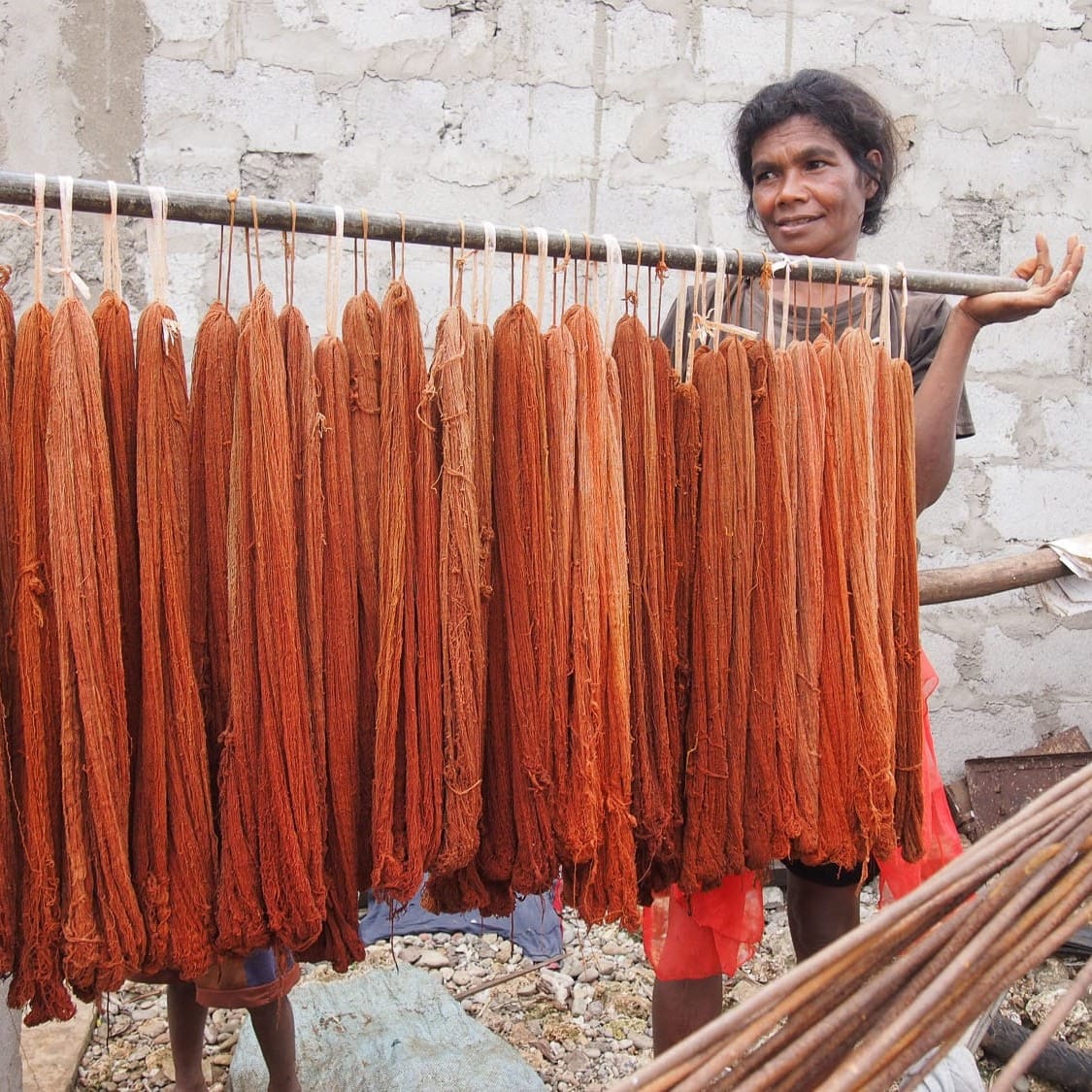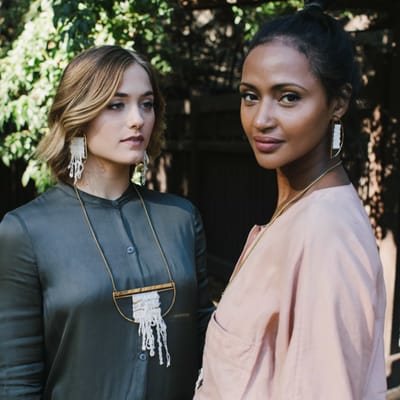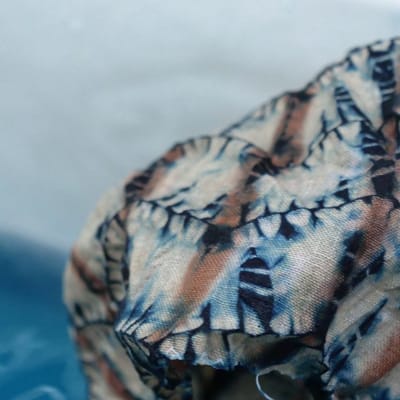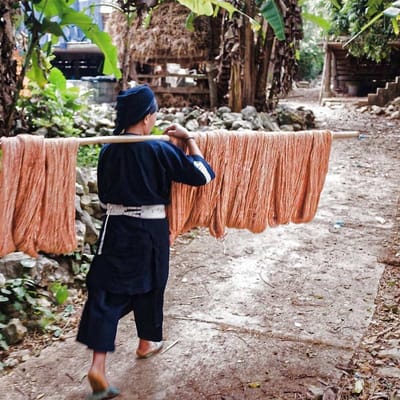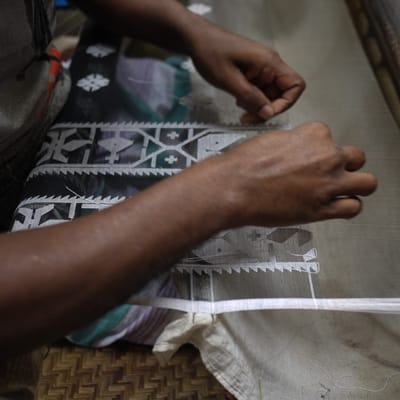Cooperation, honesty, openness, and equality – in East Timor, there’s a single word that captures it all. Fulidai-dai is a social concept unique to Iliomar and Luru, two of Timor’s most remote sub-districts. In a country still struggling to assert its independence, fulidai-dai is crucial to all aspects of life – including the quest to preserve traditional tais backstrap loom weaving.
Australian writer and contributor to The Kindcraft Emily Lush made the journey to East Timor (Timor-Leste) earlier this year. She was invited into the homes of several women belonging to Koperativa Lo’ud, one of the country’s growing number of grassroots craft cooperatives, for this rare look at tais weaving.
East Timor is a country in transition. First colonised by the Portuguese and later claimed as Indonesian territory, Timor gained independence in 2002, making it one of the world’s youngest nations. The path to sovereignty has been anything but easy and, despite the country’s idyllic natural beauty and growing popularity with tourists, the colours of chaos and conflict haven’t yet washed away. This is most palpable in the capital, Dili, where political tensions and gang rivalries often bubble over into violent outbursts. But away from the city, in the far-eastern district of Lautem, there’s an overwhelming sense of peace in daily life.
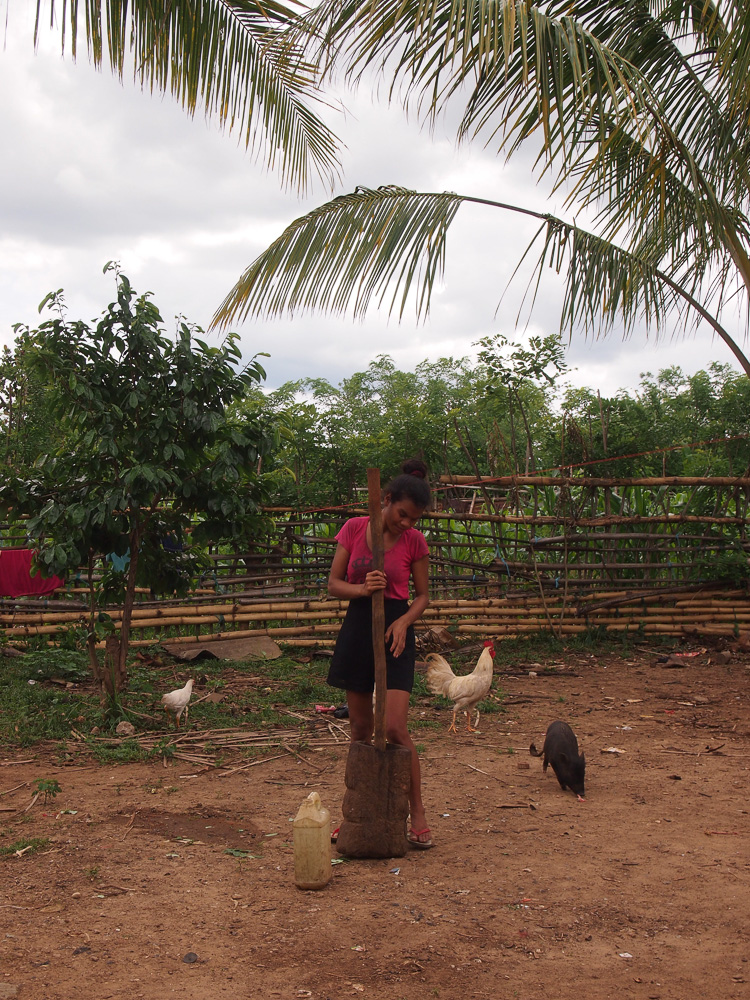
To reach Lautem, you must first trace almost the entire length of the country along Timor’s northern coast via an unnamed and often treacherous stretch of highway that takes a full day to navigate. I made the trip to Lospalos, Lautem’s capital, in early January to take up a volunteer teaching post with a local arts organisation. Lospalos itself is a cultural hotspot–an impoverished but vibrant community with around 17,000 residents, a weekly fresh food market, and a small handful of hotels and restaurants.
It’s also overflowing with the subtle pleasures I’ve come to associate with Southeast Asia: brightly colored washing strewn over leafless shrubs, left out to dry in the midday sun; the glistening skins of eggplants and tomatoes piled high on roadside stalls, shining like a trail of gemstones down the dusty main street; the occasional stucco house, always painted in one shade or another of cake-frosting pastel, that stands out like an eccentric misfit among bare-brick boxes and unfinished wooden shacks. After almost a month in Timor, these contrasts begin to heighten my senses.
An Artisan's Home
Stepping inside Mana Maria’s tiny tin-clad house for the first time, the cloth she plucks from a safe hiding place to show me seems all the more extravagant in color and scale for the earthen, cramped interior of her home. Chaperoned by a few staff from the local weaving co-op, Maria has invited me inside for a demonstration.
Knowing that I’m probably the only malai (foreigner) to ever step inside these walls, a small audience quickly gathers, all eyes locked on the viewfinder of my digital camera. A young boy pulls lengths of timber from underneath a raised platform in one corner of the room, being careful not to wake the newborn baby sleeping above, and Maria starts to assemble her loom.
She traces the grooves worn into the dirt floor, slides the wood carefully into place, and digs in her heels, bracing her legs against the apparatus. Pulling a backstrap loom over her head she unfurls the full length of brilliantly colored cotton tais, a ceremonial cloth that she is making for her daughter. Moving with a rhythm that I have begun to identify as almost universal, she begins to manipulate the heddles, organise the loose threads, and weave.
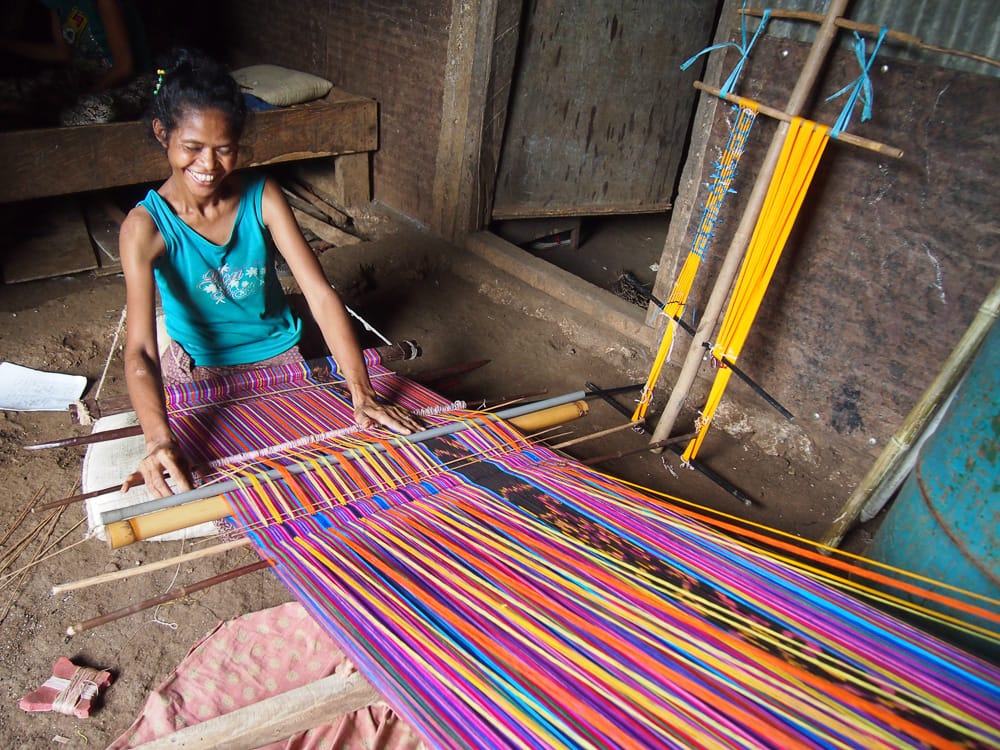
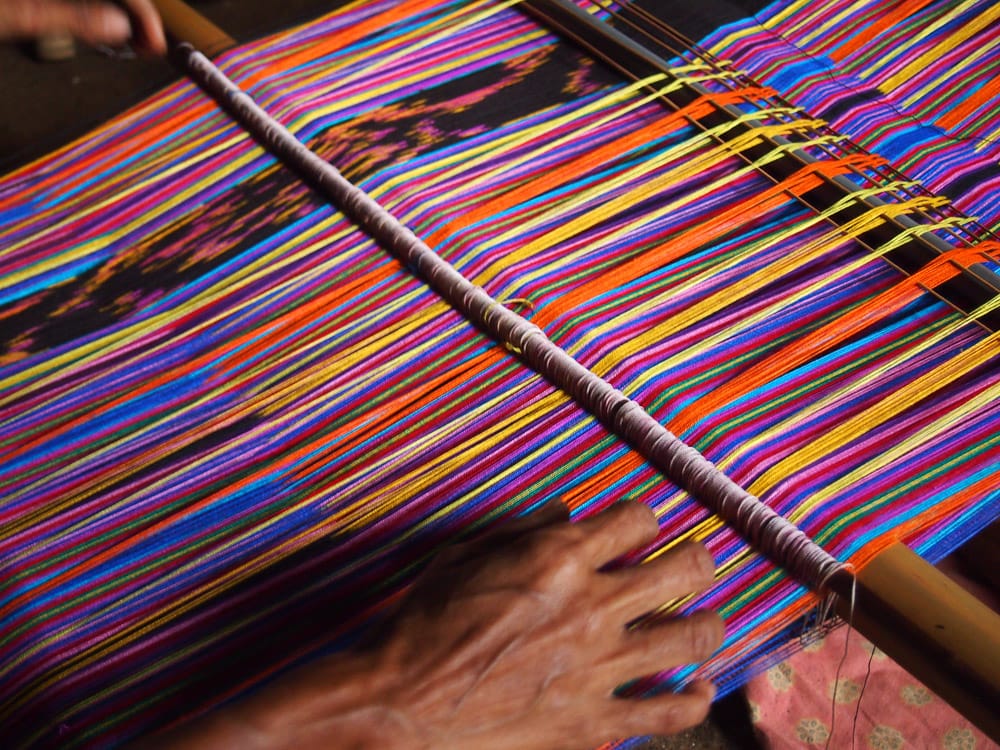
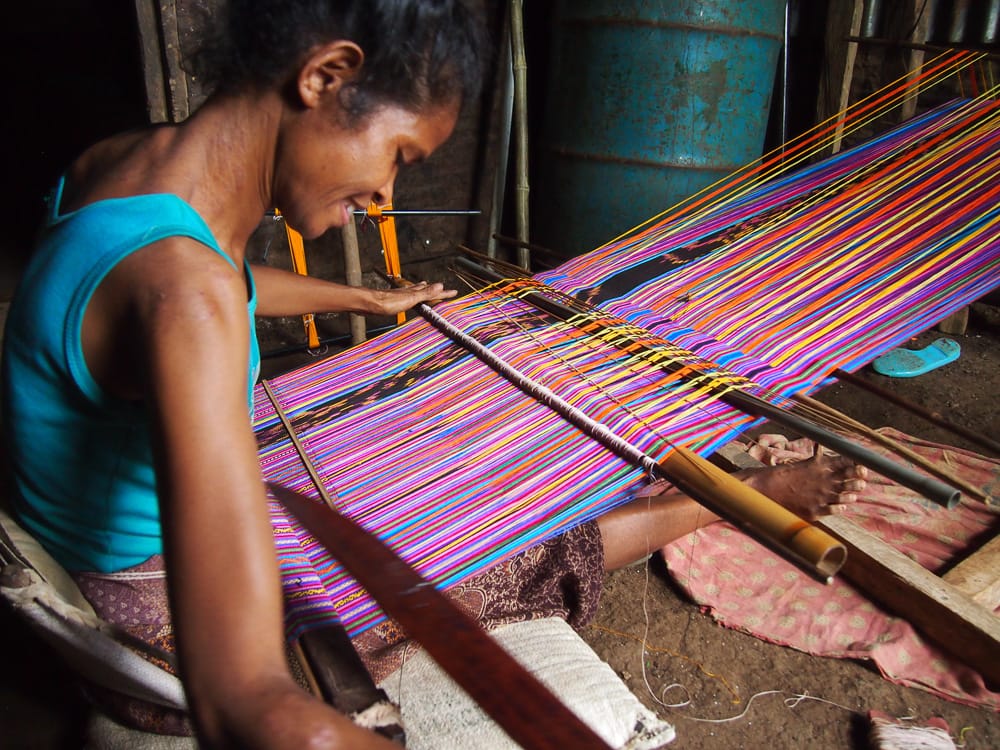
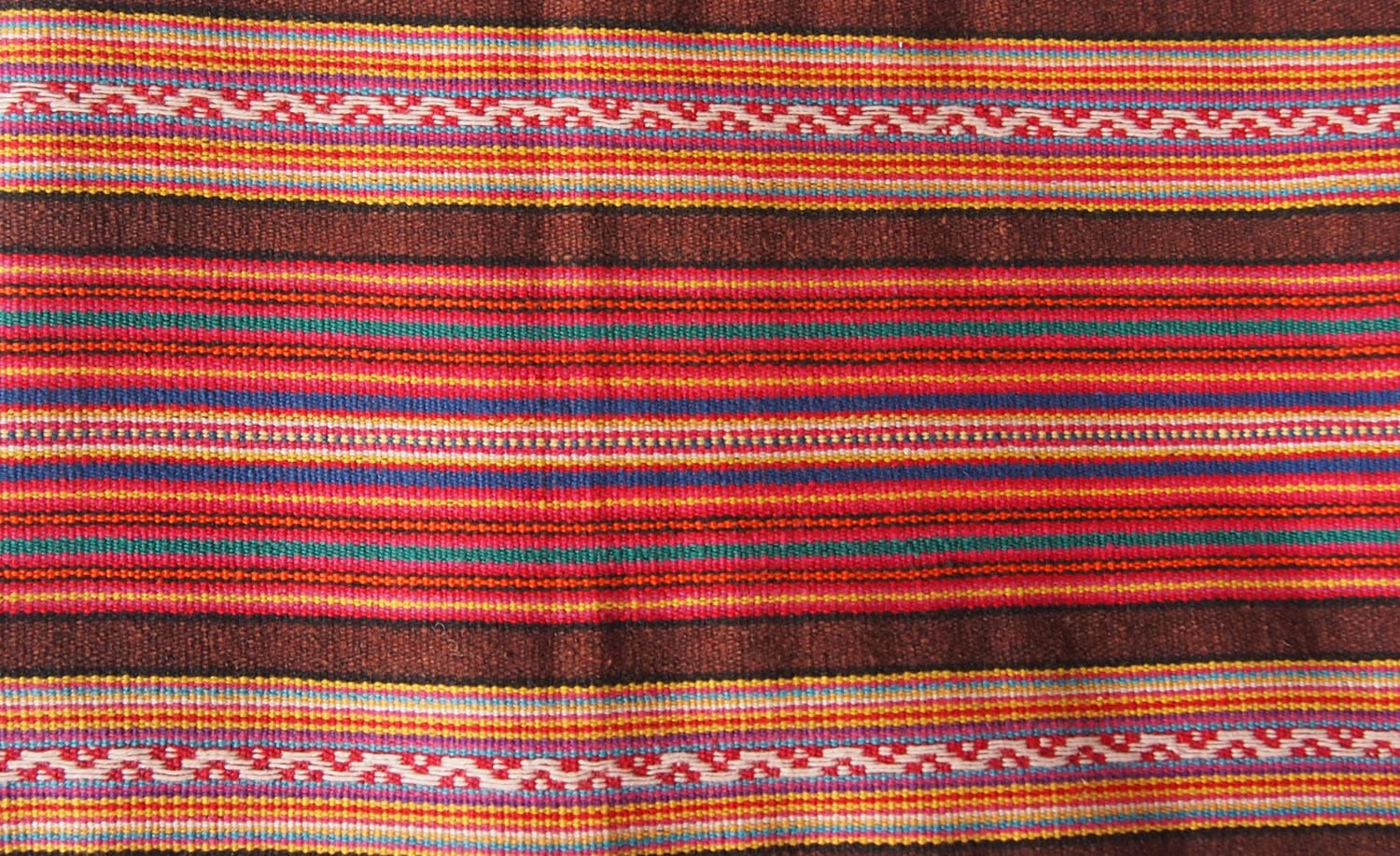
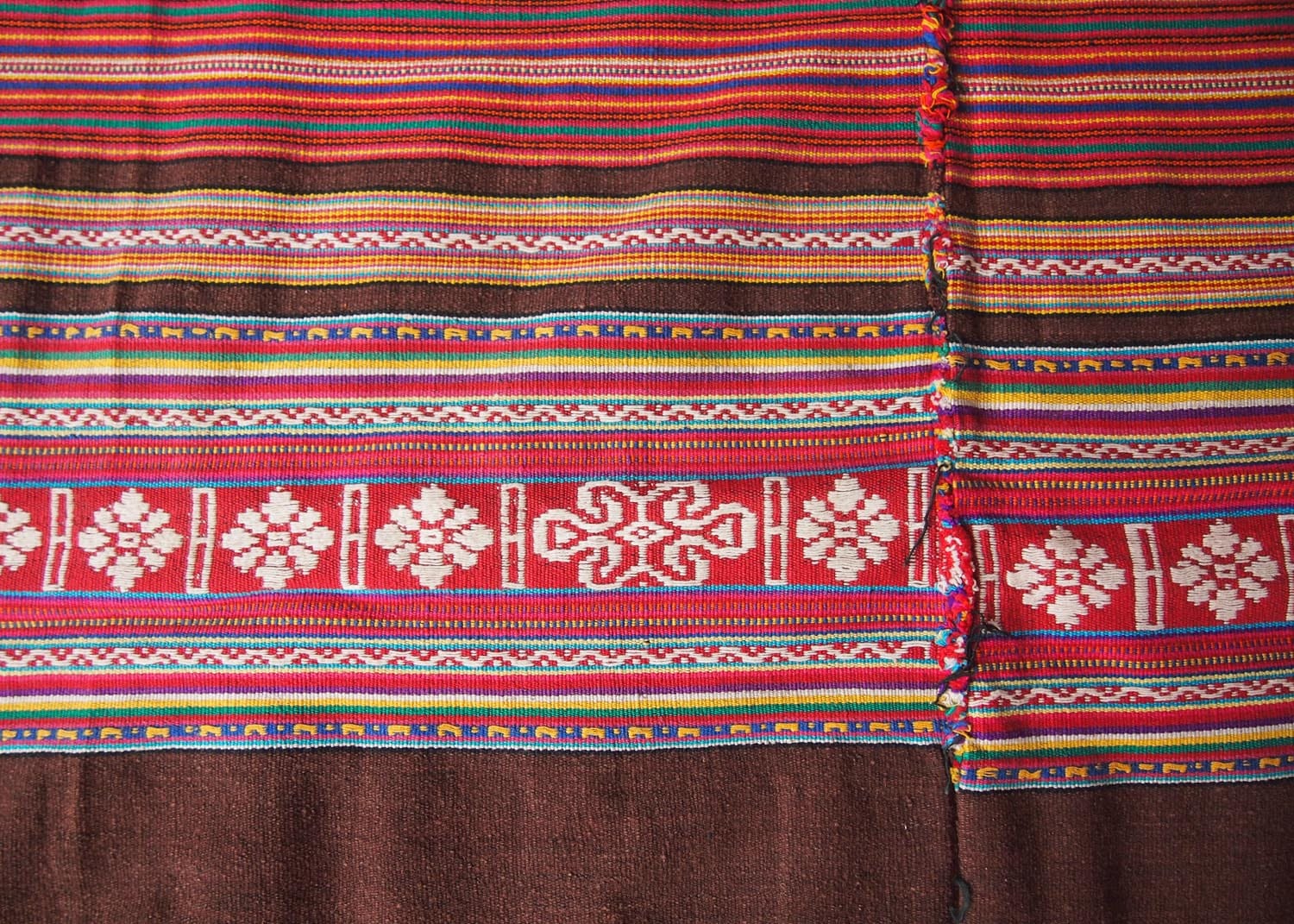
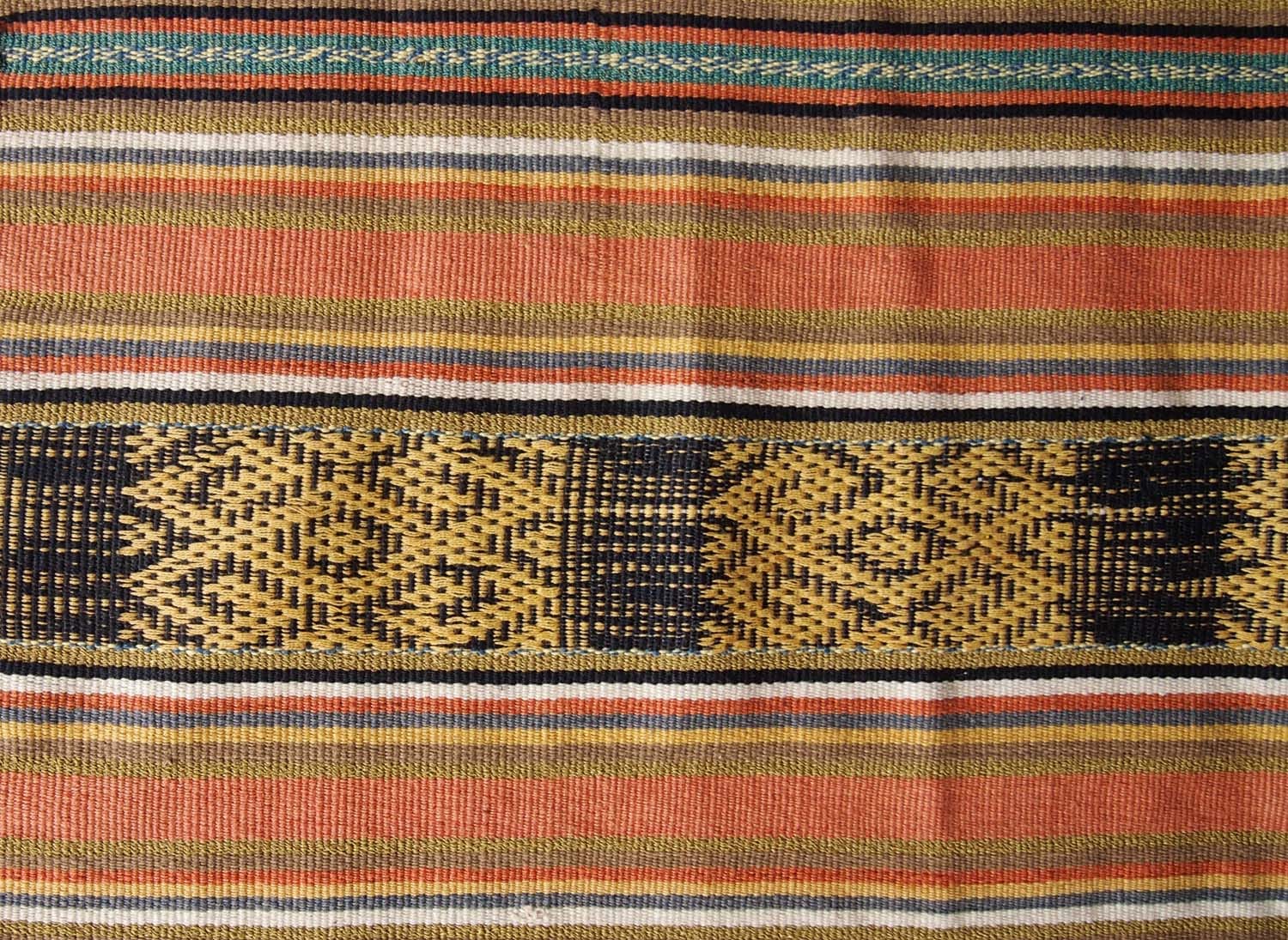
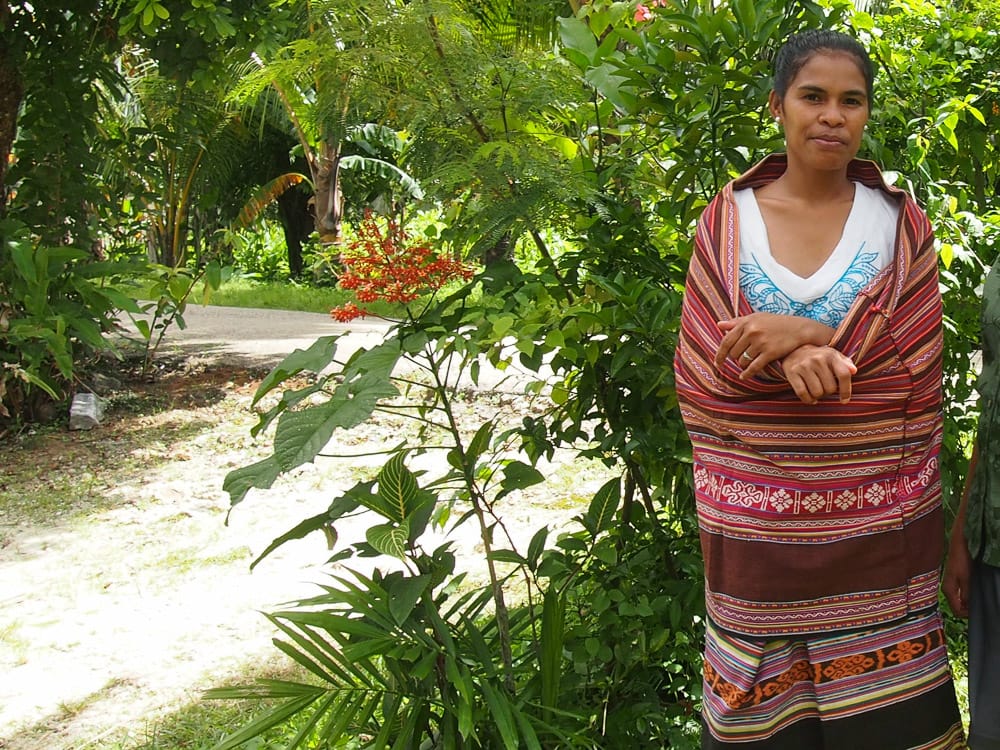
Maria is one of 70 artisans represented by Koperativa Lo’ud, a weaving collective with three local branches in Lautem district. The Lospalos arm is the biggest and is led by xefe (president) Marcelina Pinto, a small, powerful woman who earlier today jumped in the back of my 4WD to help guide me around town. We’re joined by Ilda da Cruz and Amelia Fernandez, two members of the Lo’ud administration team, and Gabrielle Creed, a volunteer from Melbourne who has helped me to organise this trip. All four women work together at Lospalos HQ, a tiny house on the town’s fringe that serves as a showroom/ shop in the front, and an office out the back. Without the space or facilities to support a communal workspace, co-op members like Maria instead dye and weave from their own homes.
As with many grassroots organizations in Timor, Koperativa Lo’ud was born out of the Resistance Movement when three women, each the wife of a resistance fighter, came together to pool their resources when conflict made them into widows. Their co-op naturally grew up around local women’s existing skills in making tais - a form of weaving unique to East Timor that is traditionally taught to girls from around the age of four.
The Tais
The designs and colorways used to make tais vary from district to district. In Lautem, tais is mainly woven from cotton using a combination of plain weave and ikat techniques. Long, narrow panels of cloth often take months or years to complete. Once off the loom, they are sometimes joined with a seam to make feto or mane tais, worn by women and men respectively during ceremonies. Modern tais can also be sewn into narrow scarves, called selendang, or cut to make accessories such as earrings, purses or bags.
Tais cloths have always played a key role in Timorese society as objects of tradition and trade, long before NGOs started marketing the craft to an international audience in the 1990s. Through co-ops such as Lo’ud, weaving has also emerged as a powerful symbol for the way post-conflict Timor still grapples with the legacies of war, and the pivotal role that women now play in the process of rebuilding. As well as supporting income generation for their artisans, a huge part of Lo’ud’s work lies in recording disappearing knowledge and re-teaching traditional tais-making techniques. Some of the key social functions of tais weaving, such as strengthening familial bonds by sharing a loom between three generations of women, are now unattainable for many Timorese. Thus another role of co-ops like Lo’ud is to help restore a sense of community for these women, who may otherwise weave in isolation, through creative partnerships and skills trading.
In post-conflict Timor, weaving is also vital to healing past traumas and as a creative outlet. It can provide stable employment for women who face an uncertain future, including those widowed, orphaned or estranged from their families during wartime. Those who are able to earn a living through tais are venerated; living proof that a woman can assume a position of independence and leadership in lifting her family out of poverty.
Red for sacrifice & liberation, Black for triumph
Back on the road in Lospalos, my last stop is at the home of one such woman. Stocky and moving with urgency, I don’t quite catch her name but her role here quickly becomes clear: she is responsible for dyeing the cotton shared among Lo’ud’s weavers. Husband and children in tow, she summons us around a deep stone pot in the middle of the backyard where a giant pestle is being used to pound leaves and bark for a new batch of natural dyes.
Moving inside, she lifts a wooden rod, heavy with damp cotton skeins, down from the rafters of her one-room house and brings it out into the yard. Through my translator, the woman reminds me that color is highly symbolic in tais weaving–especially the colors of the Timorese national flag: red for sacrifice and liberation, black for triumph, yellow for the nation’s colonial remnants, and white for the light of peace. The colors chosen for a cloth depend on the occasion where it will be worn (wedding, funeral) and, increasingly, on market tastes. This backyard may be one of the last places where you can witness endemic plants being used to color hand-spun cotton in Timor; the increasing availability of polyester fibers and synthetic dyes are changing the way tais are made. The naturally dyed mustard yellow skeins now hanging before us, splendid tones and textures on show in the sun, are becoming more and more difficult to find.
Thanks to organizations such as Koperativa Lo’ud, though, tais are growing more available overall. Items of varying quality are today bought and sold as collector’s items, souvenirs and keepsakes all over East Timor, some handmade and fairly traded through co-ops, and are increasingly finding their way onto the international market, too. In the coming years, Lo’ud plan to focus their efforts on building partnerships with international designers, helping reach a wider audience and create more demand for handmade textiles.
Given by one Timorese woman to another as a mark of respect or apology, now more and more artisans have an opportunity to offer their tais to the outside world. It is their gesture of peace and hope for a better, self-determined future.
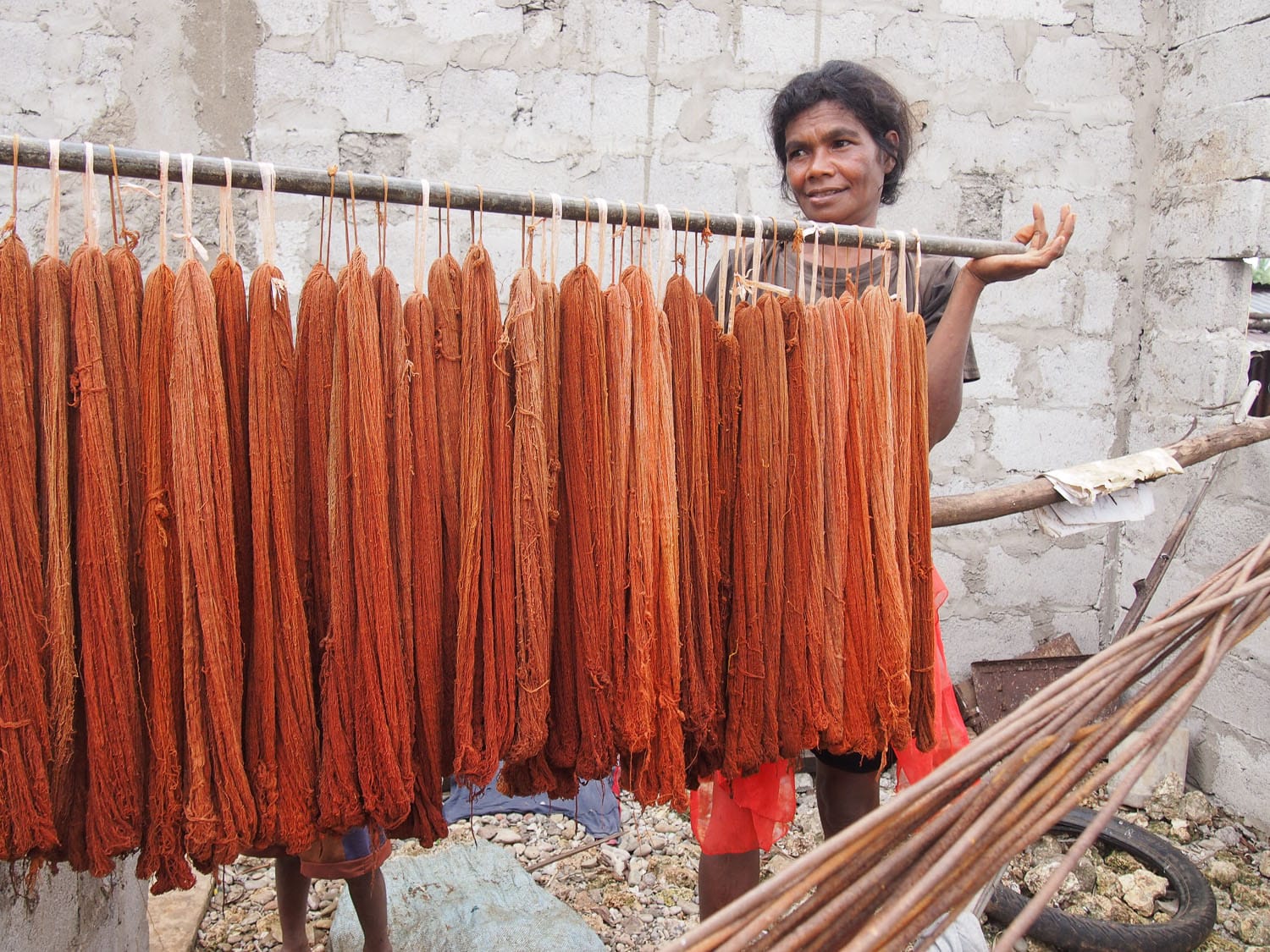
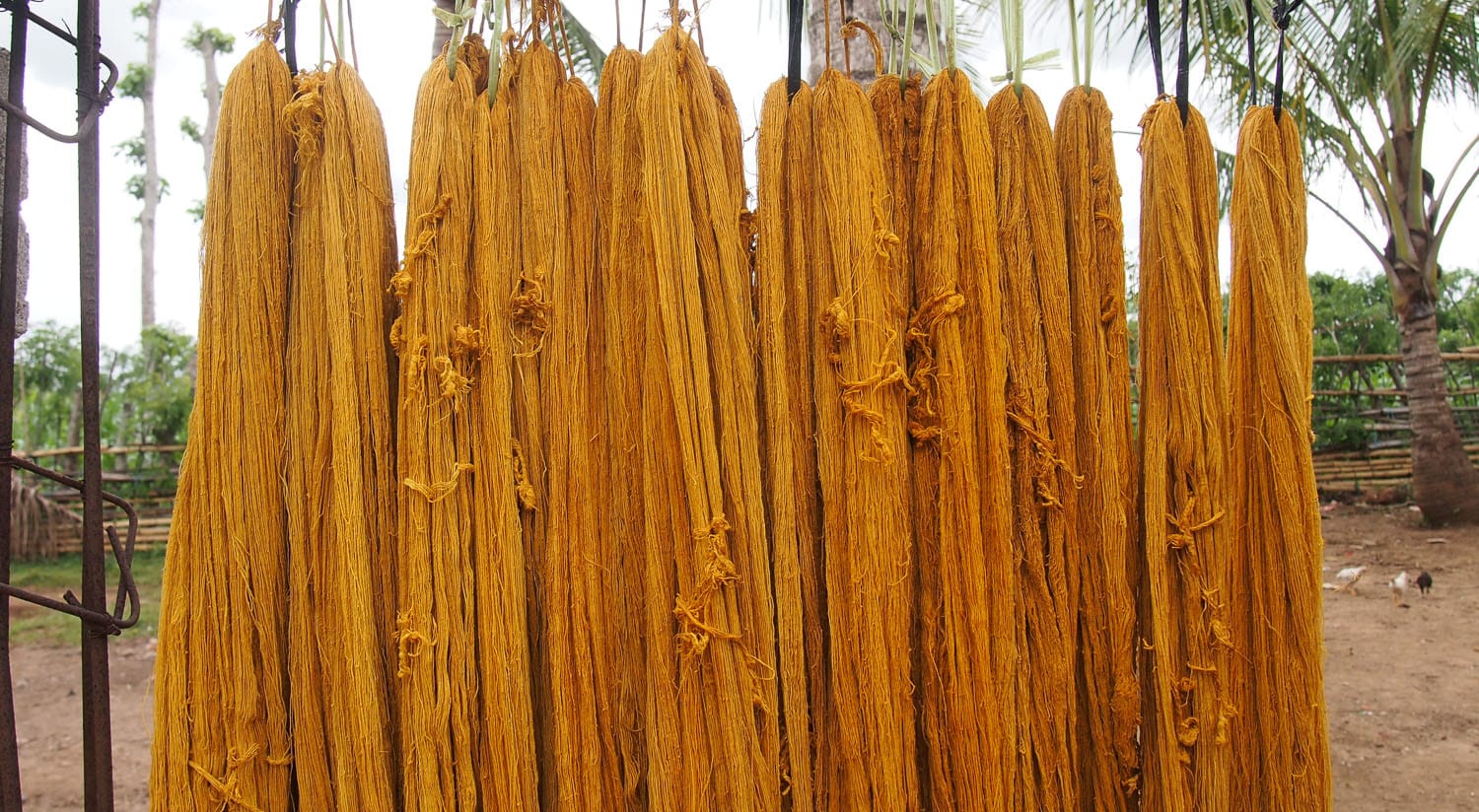
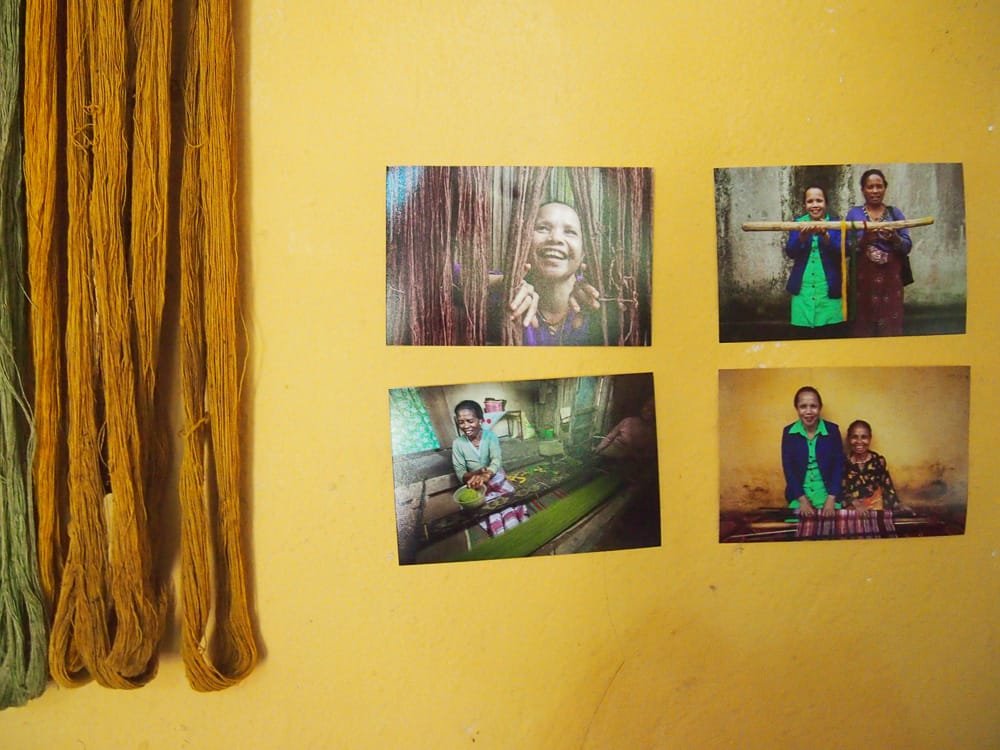
Koperativa Lo’ud products are available to purchase from ETWA’s online store and through select retailers in Timor-Leste, including Things & Stories at Hotel Timor, Dili.

